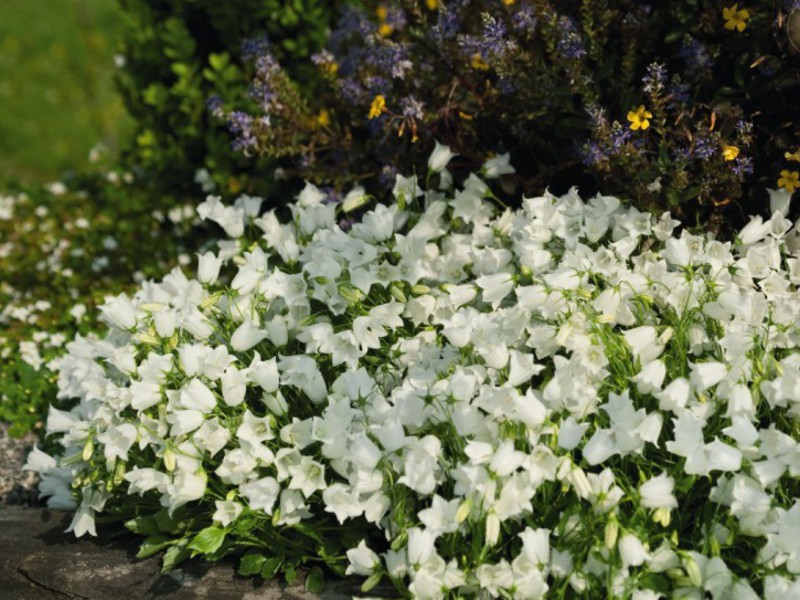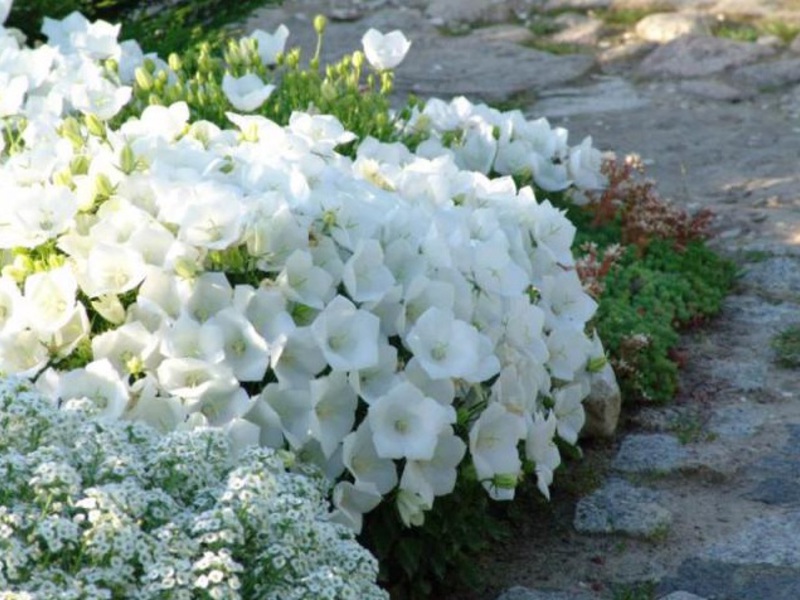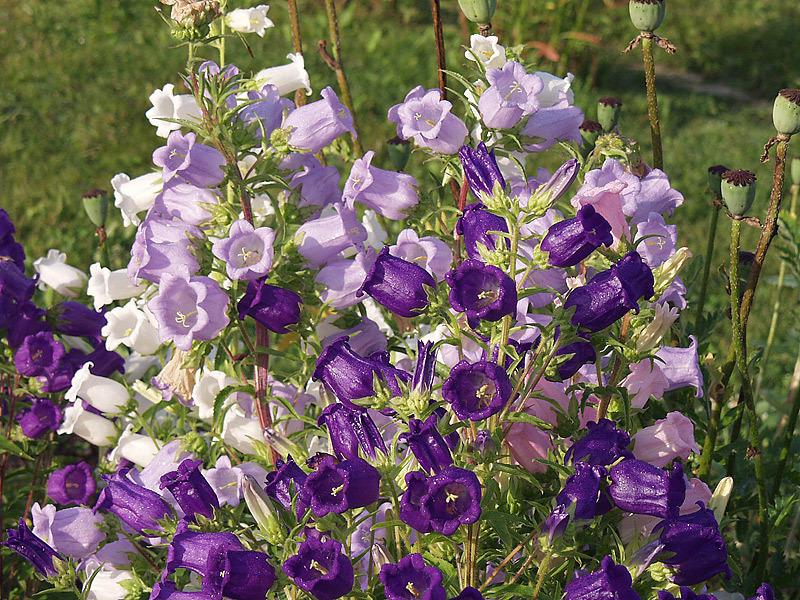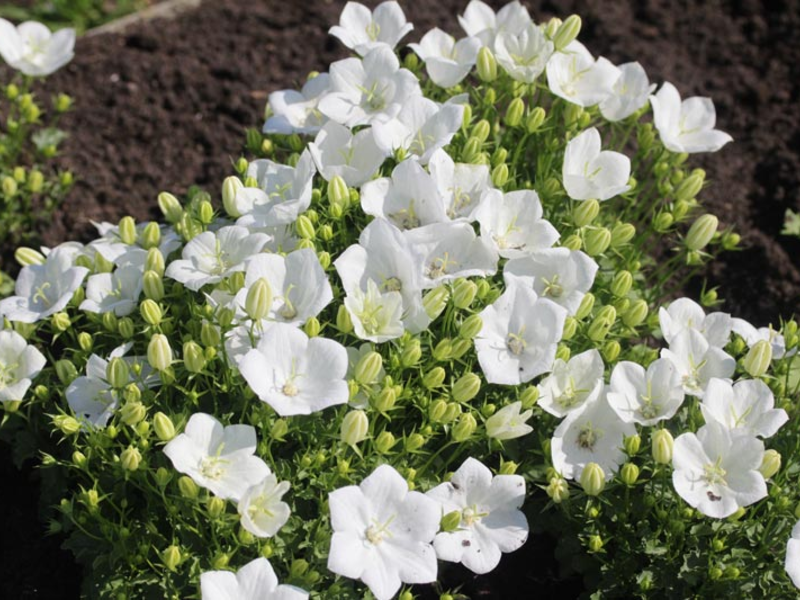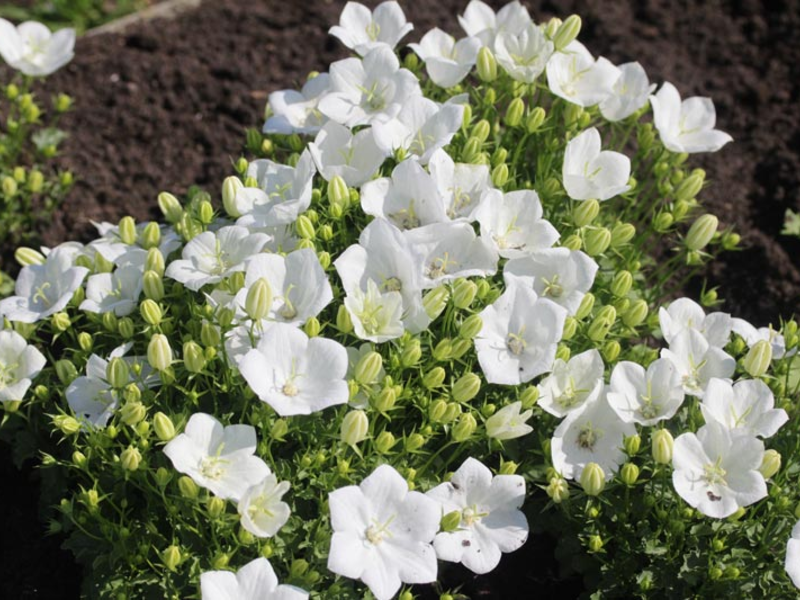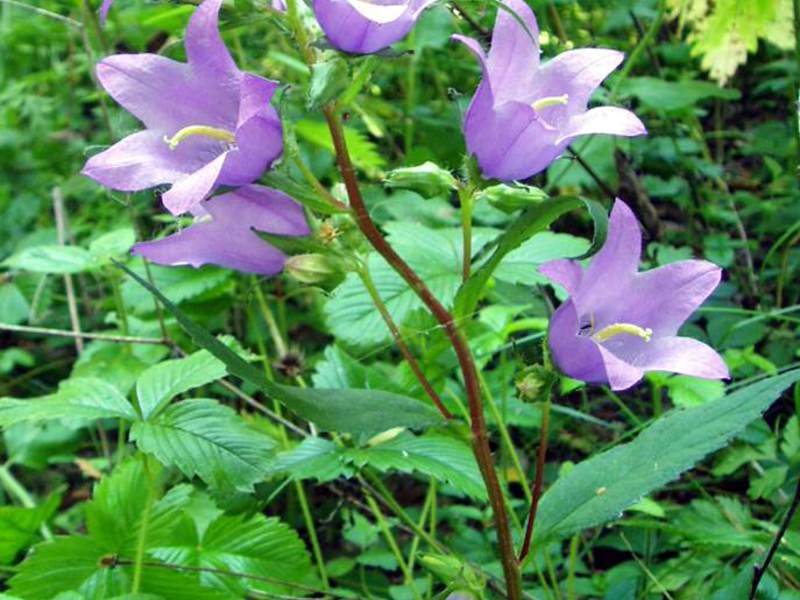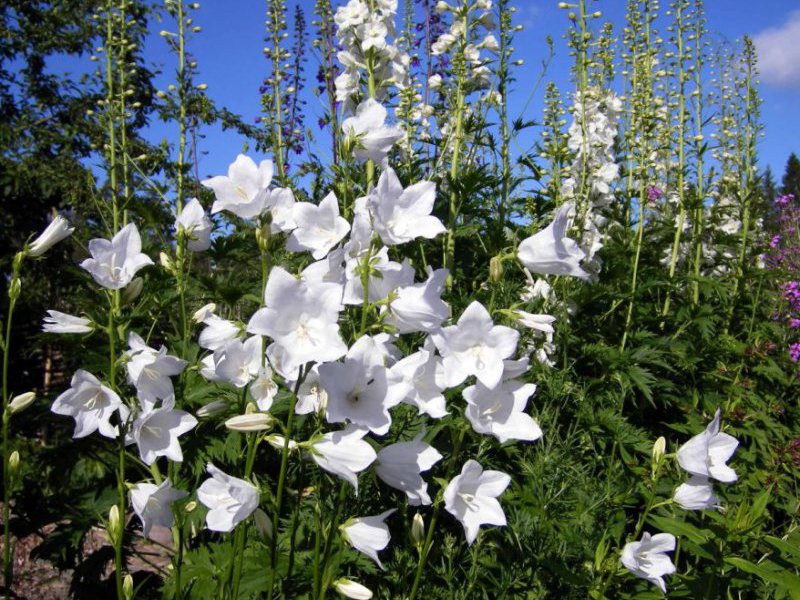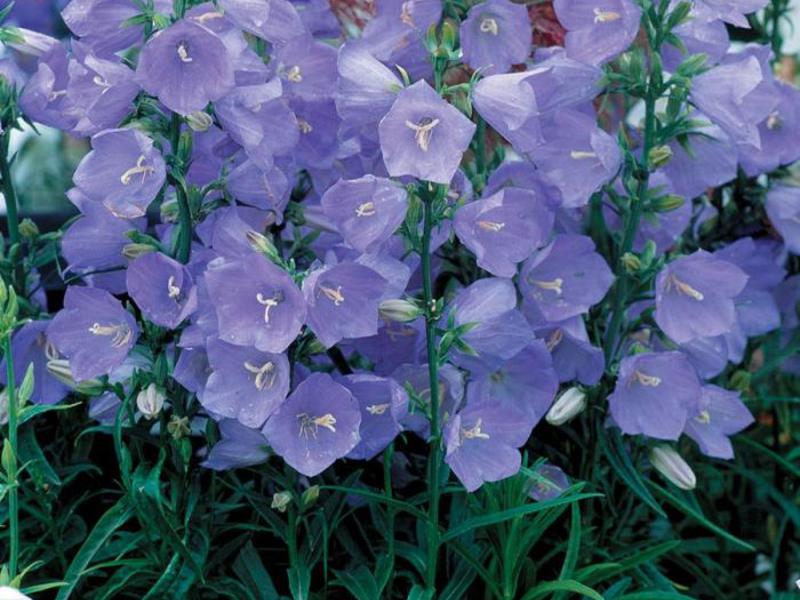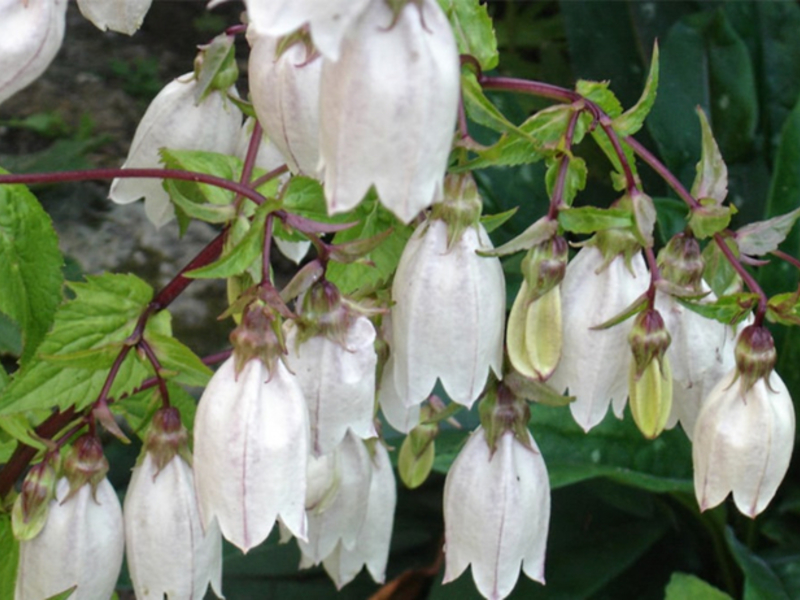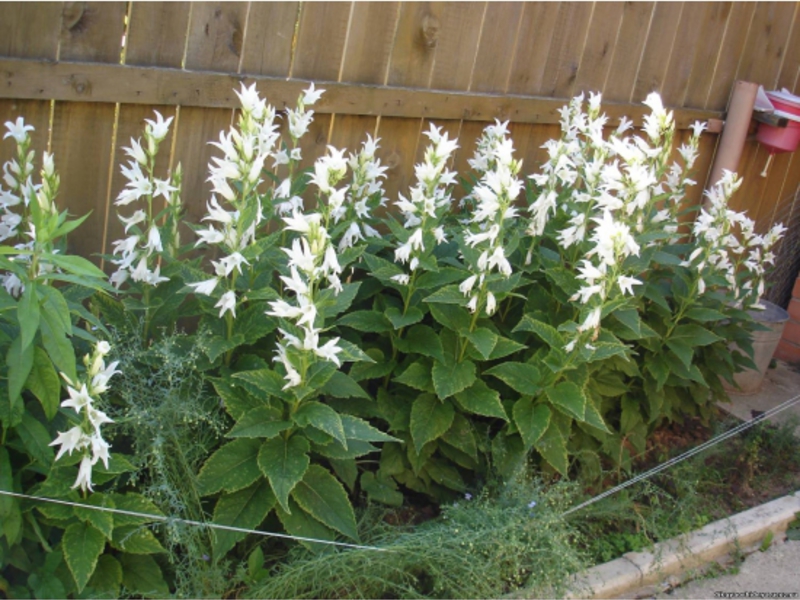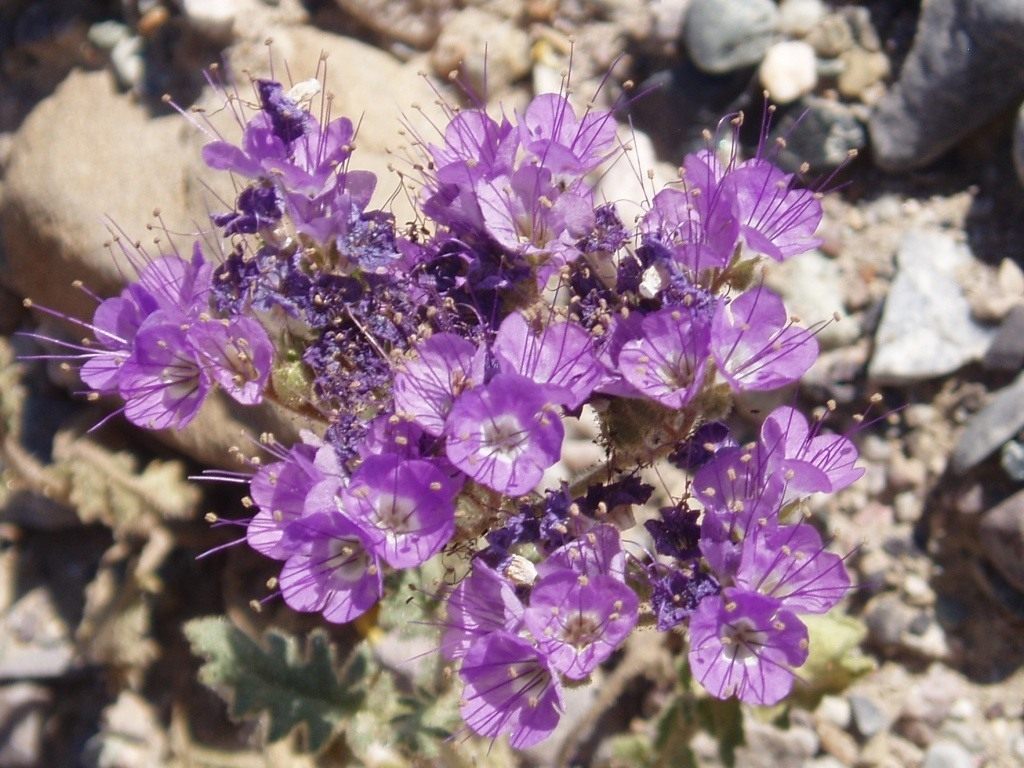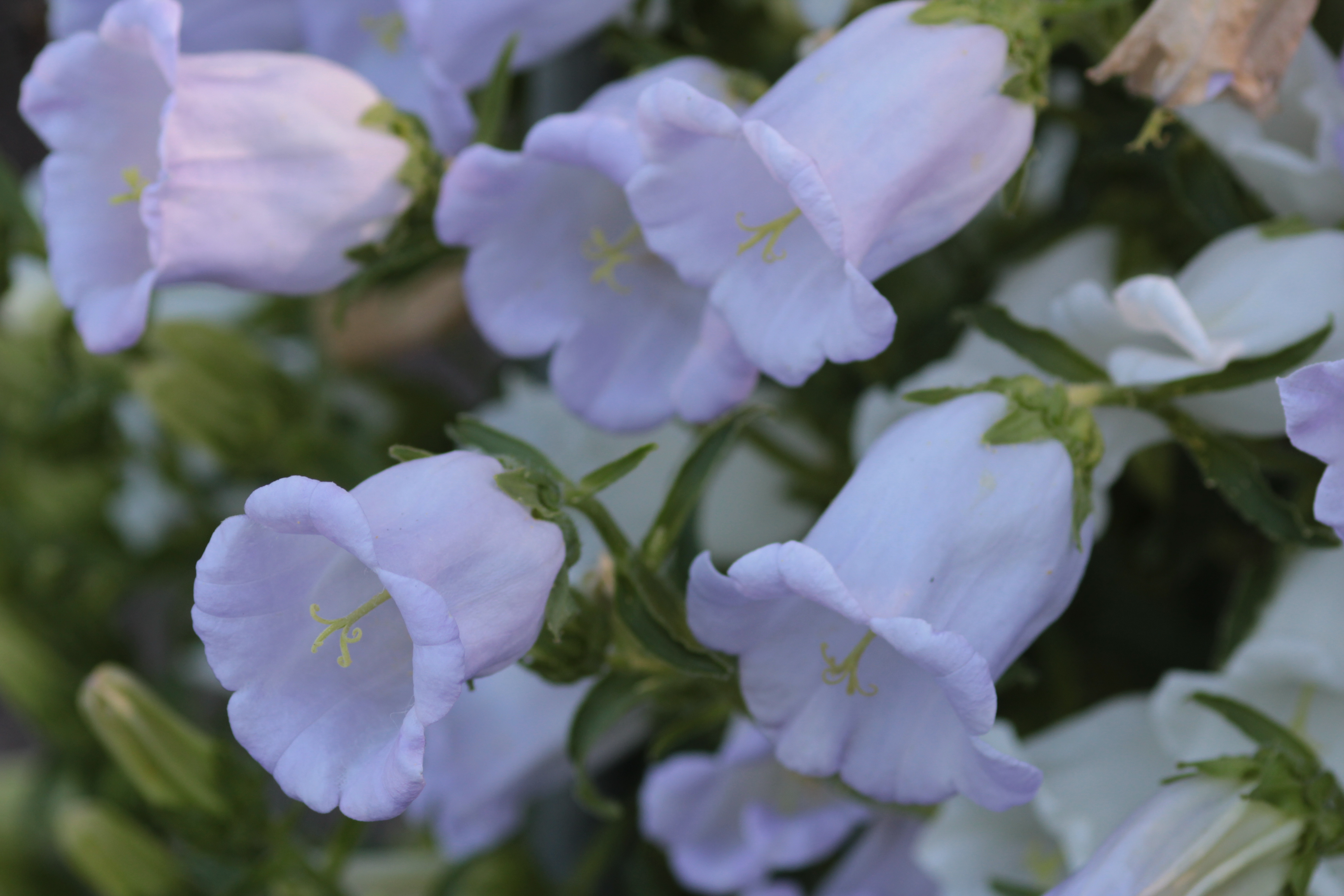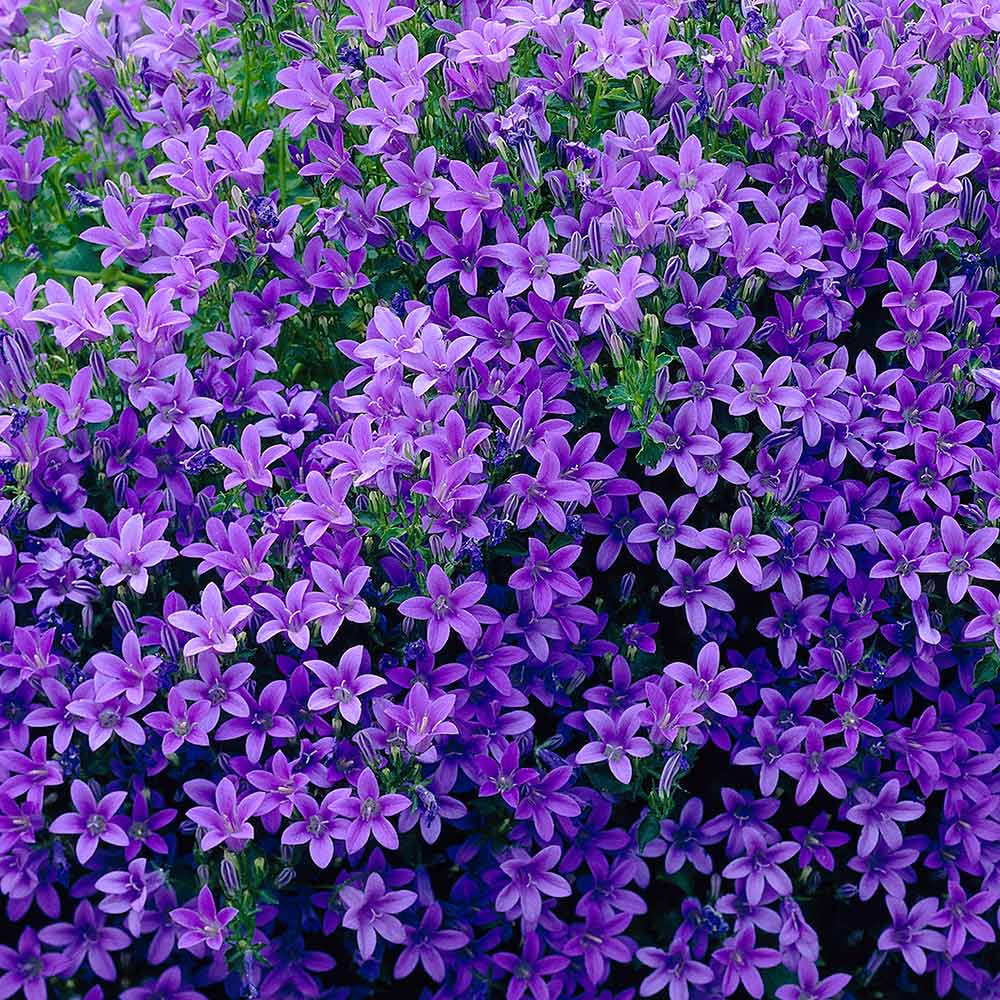In the language of florists, the bell sounds rather unusual - "Campanula". This name comes from the Latin and Italian word "campana", which means "bell". This is the shape of the bell rim. This explains why he is known in our country under this name, which is officially enshrined in the domestic botanical nomenclature.
Throughout history, the bell has been treated with love in Russia. Once again, this is proved by the affectionate names that were used when mentioning the campanula in different localities: birdwort, chebotki, bells, chenille ... And, according to the old belief, a person is given the ringing of a bell only once a year - on the magical night before Ivan Kupala ...
Content
Description
A perennial bell plant forms a simple or branched stem of small size, reaching a height of 5-150 cm... The leaves have the next order of arrangement, in some species they are presented in the form of a rosette. Most species of bells have paniculate flowers, and in more rare cases they are racemose; there are also such plants in which the inflorescences are single.
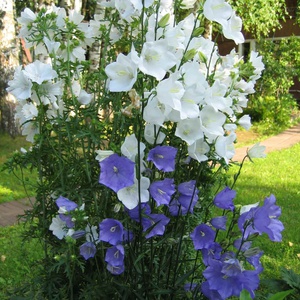 the species of this plant can be distinguished by a corolla, which can have a spine-petal, bell-shaped, funnel-shaped, tubular-bell-shaped shape. Rarer variations are flatish and almost wheel-like corolla;
the species of this plant can be distinguished by a corolla, which can have a spine-petal, bell-shaped, funnel-shaped, tubular-bell-shaped shape. Rarer variations are flatish and almost wheel-like corolla;- at the end of flowering, the fruit ripens in the form of a box. It contains many small seeds that remain viable for 4 years. There are up to 4500 seeds per gram of weight;
- garden bells are summer green plants, as evidenced by their ability to retain leaves during the growing season. In other words, the bells begin to grow at a minimum spring temperature of + 5 degrees Celsius, and the transition to the dormant stage occurs when the first frost occurs.
Growing
Basically perennial flowers bells can grow on any soil, however, they have their own preferences here too. It is recommended to plant them on well-treated soils that provide for high-quality drainage, with a neutral or slightly alkaline reaction and provided with the necessary nutrition. Usually, branch channels or drain pipes are arranged to solve the drainage problem. This must be done without fail, since stagnation of moisture in winter has an extremely negative effect on the plant, as there is a danger of root rot and freezing. Areas where moisture accumulates after rains or when snow melts are unsuitable for growing garden bells.
 the preparation of the site for planting the bell is done in advance: for this it is necessary to dig up the ground to a depth of 30-40 cm and remove all weeds;
the preparation of the site for planting the bell is done in advance: for this it is necessary to dig up the ground to a depth of 30-40 cm and remove all weeds;- heavy clay and loamy soils require sand and peat. Given that there is a sufficient amount of nutrients in such areas, you can limit yourself to a small amount of fertilizer;
- top dressing should be thorough when planting a garden bell in loose and sandy soils containing little humus. They must be fertilized with sod land, peat, humus or muddy pond soil;
- from the fertilizers used, it is necessary to exclude fresh peat and manure, since otherwise this can provoke the development of fungal diseases.
When planting perennial bell flowers, it must be borne in mind that the plant can only grow well on them with neutral and slightly alkaline soil reaction.
- for planting a bearded and cut bell, you will have to prepare a site where soil with a slightly acidic reaction should prevail;
- wild mountain species of bells, whose natural habitat is limestone rocks, will feel better in slightly alkaline soils. Therefore, before you start planting a plant, you need to add a small amount of lime to the soil.
Views
The bell genus includes many different species, which differ not only in their habitat, but also in other features.
Carpathian bell
 This species is most often found on limestone rocks and in the upper belt of the mountains of Europe. Of the morphological features, it is worth highlighting the presence of a fibrous whitish root... The plant forms many stems 20-40 cm high, usually with a straight, branched shape, thanks to which the bush takes on its characteristic spherical shape. Heart-shaped leaves are located on long petioles. The largest are basal leaves, reaching a length of 5 cm, and smaller leaves on the stems.
This species is most often found on limestone rocks and in the upper belt of the mountains of Europe. Of the morphological features, it is worth highlighting the presence of a fibrous whitish root... The plant forms many stems 20-40 cm high, usually with a straight, branched shape, thanks to which the bush takes on its characteristic spherical shape. Heart-shaped leaves are located on long petioles. The largest are basal leaves, reaching a length of 5 cm, and smaller leaves on the stems.
Inflorescences grow solitary, are large, reaching 3 cm in length and width. The characteristic color is blue. Flowering of this type of bell begins in June and early July, but begins to fade in mid-September. During the entire period, the flowers retain a bright, rich color. In the period from August to October, seeds begin to ripen, which retain high germination (up to 90%). If harvesting is delayed, seeds can multiply by self-seeding.
Bellflower nettle
This kind prevails in shady, mixed forests... The usual habitat is Europe, Western Siberia, North Africa. This plant is known to many as bellflower, upland, gooseneck, throat grass and clove grass, which can be explained by its medicinal properties, since it helps with sore throats. A salad can be made from the leaves and roots of this bell, and young leaves are used as an additive in cabbage soup.
Spoon bell
The favorite growing places of this species are the limestone mountains of Europe. It grows in the form of a low-growing creeping perennial, in which filamentous stems 10-18 cm high are formed. Adult specimens often form a dense turf. The characteristic color of the leaves is light green. Bell flowers have a white and blue tint, grow drooping, not exceed 1 cm in diameter, presented in the form of loose inflorescences. The flowering time begins in mid-June and lasts until the end of August. During the entire phase, they show abundant flowering and fruiting. They multiply easily as a result of self-seeding. They do not lose their attractiveness until late autumn.
Bellflower milky-flowered
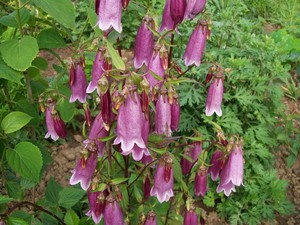 Most often, this plant can be found in the upper, forest and subalpine belts of the Caucasus Mountains and Asia Minor. It is a tall plant, reaching a height of 60-100 cm, has a large number of brushes that adorn the branched stem in the upper part.
Most often, this plant can be found in the upper, forest and subalpine belts of the Caucasus Mountains and Asia Minor. It is a tall plant, reaching a height of 60-100 cm, has a large number of brushes that adorn the branched stem in the upper part.
The flowers are small enough and their diameter does not exceed 3 cm, they can have different colors within from milky white to lilac color, presented in the form of broad-pyramidal inflorescences, include up to 100 different shades. It begins to bloom in June-July, when many flowers open at the same time.Fruiting is just as abundant in August, when many seeds begin to ripen.
Bell peach
This type of bell is most abundant in the forests and forest edges of Europe, the Caucasus and Western Siberia. Before the growing season, they look like a rosette of basal leaves, from which a slender strong stem 60 cm high grows by mid-summer. It is decorated with miniature linear-lanceolate leaves with a dark green color. At the very top of the stem are clusters of blue or white flowers. A corolla is formed on the flower, which has a wide bell-shaped shape, reaches a width of 3-3.5 cm... There are garden species that are decorated with double flowers. The first flowers open in June and decorate the site until the end of summer.
After wilting, fruits begin to set on the shoots, which look like bolls containing many seeds, which reach maturity in August-September. Some species are capable of reproduction by self-seeding. If necessary, you can extend the flowering of this species and preserve its decorative properties. For this, it is important to avoid seed ripening, for which it is necessary to promptly remove faded flowers. To obtain seeds, it is recommended to leave separate delicate specimens of the peach bell. The photo of the plant hardly differs from the original.
Pozharsky bell
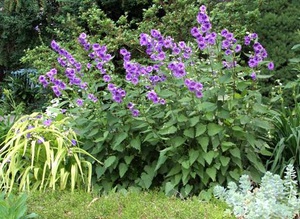 This member of the family most often lives on the limestone rocks of southern Europe and the Balkans. During the growing season forms a dense pillow 15-20 cm high, which is made up of heart-shaped petiolar leaves combined with a large number of peduncles. The characteristic shape of the inflorescences is broadly bell-shaped, almost stellate. Pozharsky's bell flowers are light plum-blue in color.
This member of the family most often lives on the limestone rocks of southern Europe and the Balkans. During the growing season forms a dense pillow 15-20 cm high, which is made up of heart-shaped petiolar leaves combined with a large number of peduncles. The characteristic shape of the inflorescences is broadly bell-shaped, almost stellate. Pozharsky's bell flowers are light plum-blue in color.
Conclusion
The bell is one of those ornamental plants that even novice growers have heard of. This plant has no particular inflorescences that stand out, but this does not reduce interest in it. You can grow a bell in your summer cottage, but it is advisable to choose suitable place for it to land... Although this plant is undemanding to soil, the presence of a fertile composition is beneficial to the bell. It is very important to take care of the availability of high-quality drainage, since this plant can easily die in marshy conditions.
